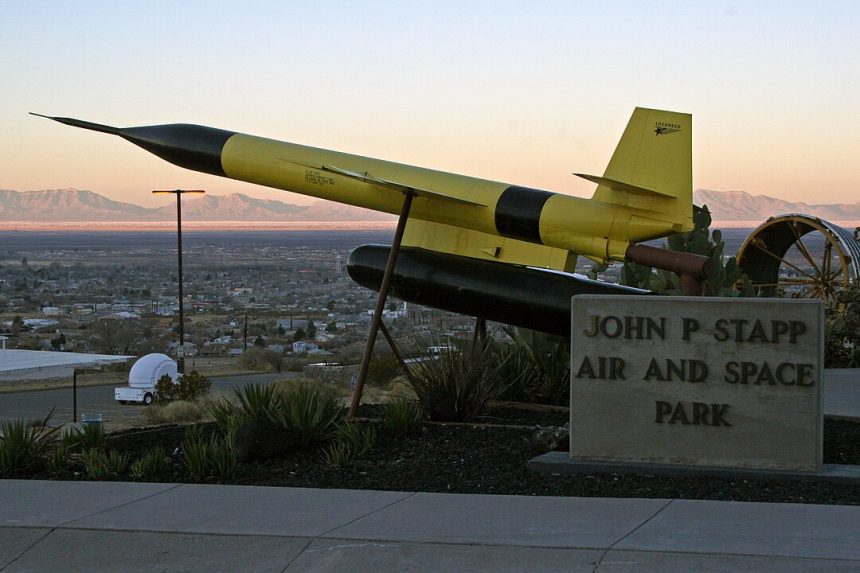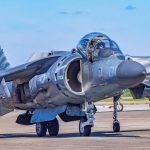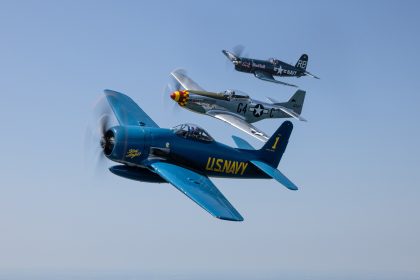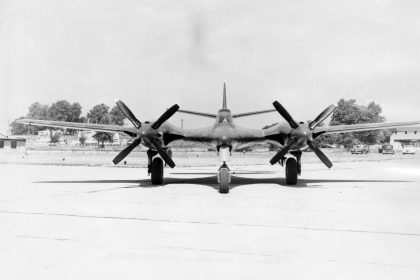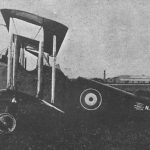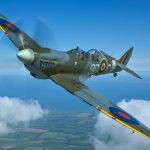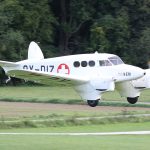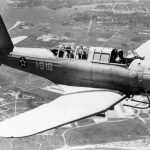By Kenneth P. Katz
In the years following World War II, the American aviation industry and the military anticipated revolutionary changes in flight. The war had been fought largely with aircraft powered by reciprocating engines and propellers, which had evolved to the point of nearing their technological limits. But new propulsion methods—particularly the turbojet, rocket, and ramjet—promised dramatic performance increases, rendering much of the WWII-era fleet obsolete. The turbojet was the most prominent postwar advancement. In a turbojet, incoming air is compressed by a spinning compressor, raising its pressure and temperature. This air is then mixed with fuel and ignited in the combustion chamber, generating hot, high-energy gases that expand through a turbine—powering the compressor—and then exit the rear of the engine as thrust. However, turbojets faced a critical limitation: at speeds above Mach 3, the air compressed at the inlet became so hot that additional heating in the combustion chamber could melt engine components. Aerospace engineer and historian Kenneth P. Katz explores the history of the Lockheed X-7.
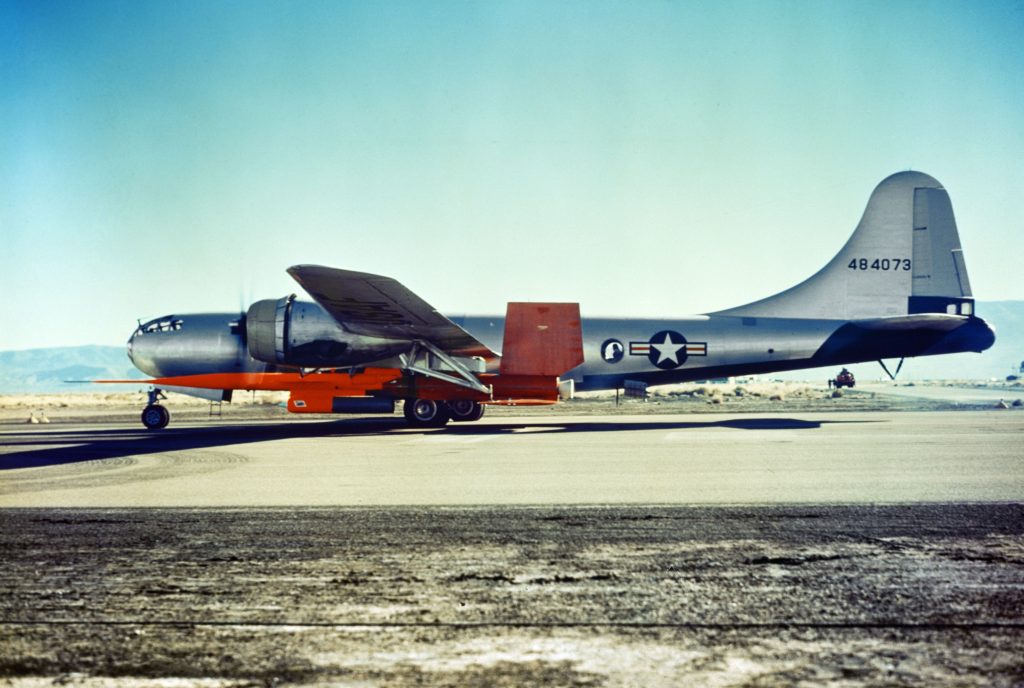
Rocket engines offered another option. Unlike turbojets, which rely on atmospheric oxygen, rockets carry both fuel and oxidizer, enabling operation at high altitudes and even in space. But this self-contained propellant system limited flight duration to short bursts. Then came the ramjet—an even simpler jet engine. With no moving parts like compressors or turbines, the ramjet uses the aircraft’s forward motion to compress incoming air. This air is mixed with fuel and ignited, and the resulting hot gases are expelled through a nozzle to produce thrust. Ramjets can operate above Mach 3 without the thermal limitations of turbojets—but only once already traveling at high speed. Thus, they require a separate propulsion system, such as a rocket booster, to accelerate to operating speed.
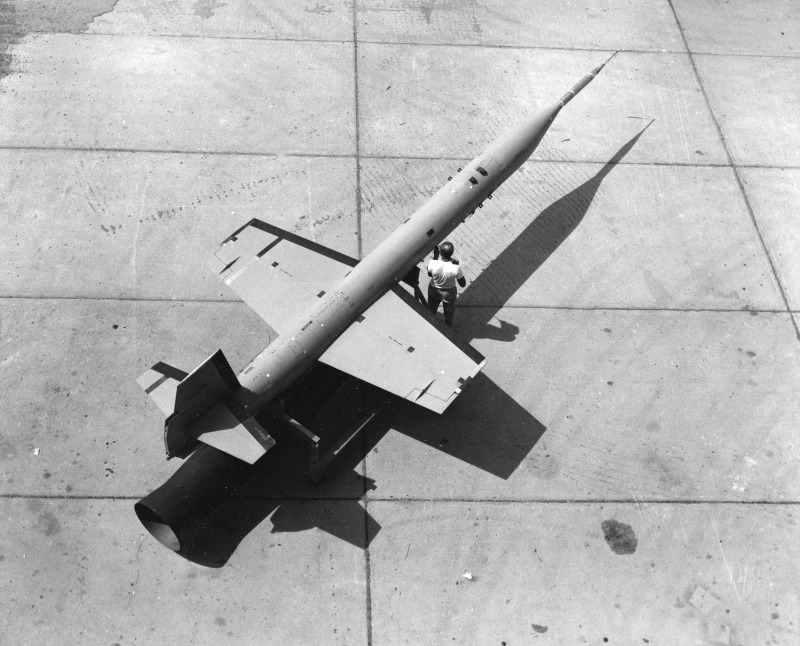
While Mach 3+ speeds seemed futuristic in an era when the P-51 Mustang barely reached Mach 0.6, aviation engineers were confident that new propulsion technologies and aerodynamic advancements could deliver this performance. Eager to explore the potential of the ramjet, the U.S. Army Air Forces initiated a test program in 1946, awarding Lockheed’s Skunk Works a contract to build the X-7—an unmanned, high-speed ramjet test vehicle. Lockheed’s X-7 joined the emerging X-plane family of experimental aircraft, most famously including the rocket-powered Bell X-1, the first aircraft to break the sound barrier. Unlike its piloted cousins (X-1 through X-5), the X-7 was unmanned, a necessary design for the extreme speeds and temperatures anticipated.
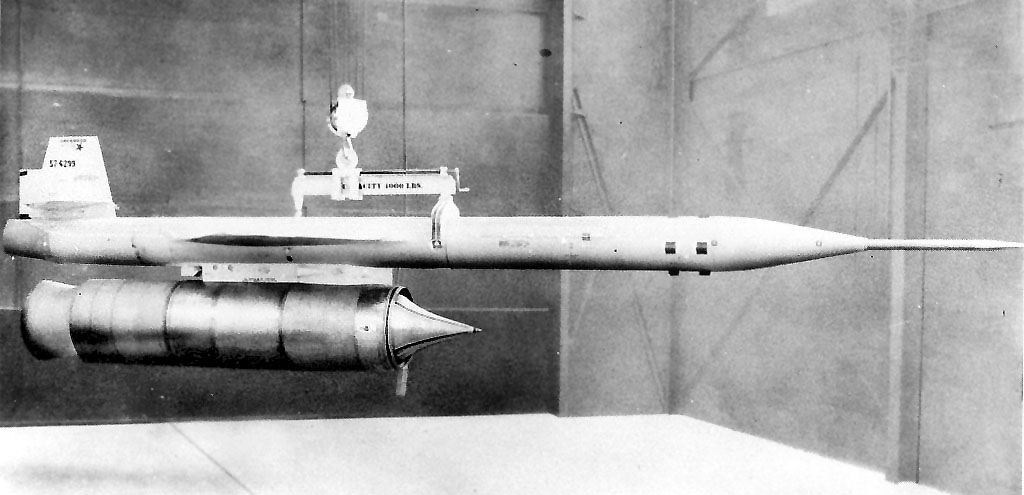
Flight Testing the X-7
The X-7 was designed to be carried aloft under the wing of a modified B-29 bomber. Upon release, it would accelerate with the help of a solid-fuel rocket booster. Once at speed, the booster separated and the ramjet ignited. An autopilot controlled the X-7 during flight, collecting performance and propulsion data. Typical mission profiles reached Mach 2+ and altitudes between 60,000 and 100,000 feet. At the end of each flight, the X-7 deployed a drogue parachute to stabilize and slow down, followed by a main parachute for recovery. It descended nose-down, designed to plant its nose spike into the ground, standing upright for easy retrieval. Most X-7s were recovered, refurbished, and reused.
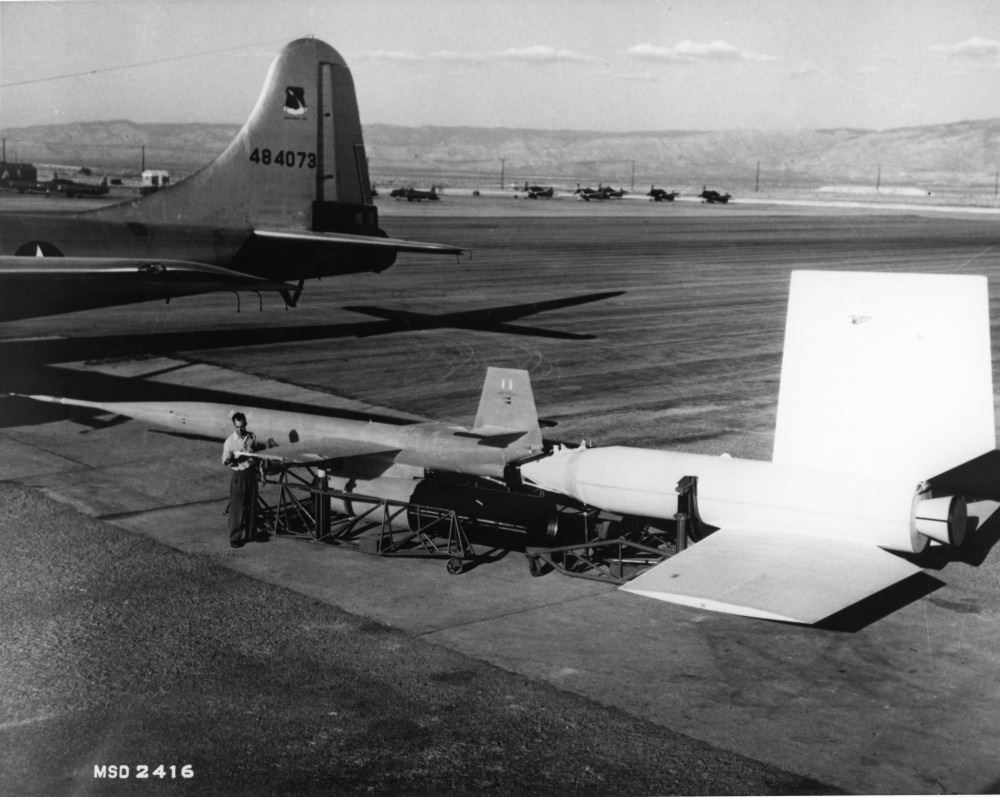
Initial flight testing began with scale models, followed by the first X-7A-1 launch on April 26, 1951. Conducted from Holloman Air Force Base in New Mexico—rather than the more famous Edwards AFB—the early flights suffered structural failures. Fortunately, without a pilot aboard, these mishaps yielded valuable engineering insights. Early X-7 missions tested the Wright XRJ47 and the more successful Marquardt XRJ43 ramjet engines, the latter becoming the cornerstone of the program.
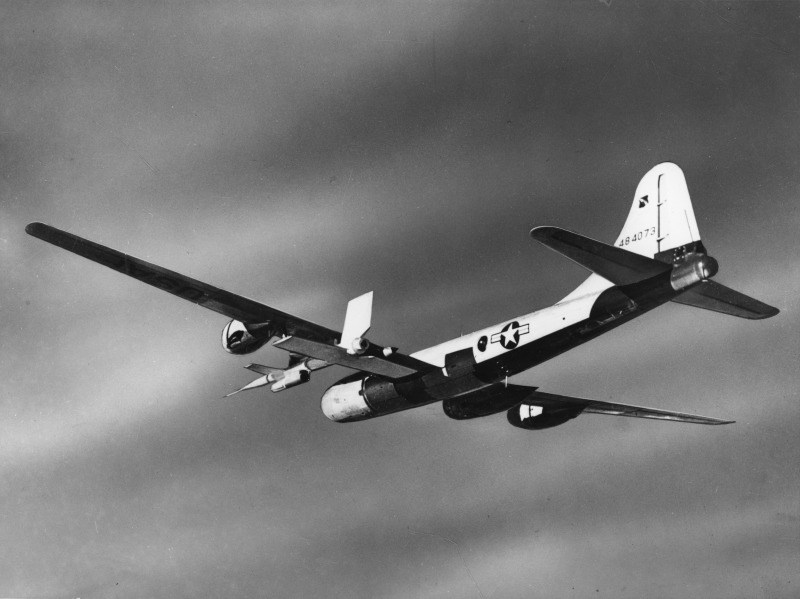
Ramjets in Service: From Bomarc to Mach 4
Although the X-7 began as a pure research platform, its mission evolved. Boeing’s F-99 Bomarc missile (later designated IM-99) used dual RJ43 ramjets to reach supersonic speeds as a long-range surface-to-air missile. The X-7 supported Bomarc development by serving as a testbed for a scaled-up RJ43. The first flight of this larger engine variant occurred on December 17, 1952. Many test flights ended in engine failure, but each one contributed essential data—both from telemetry and post-flight inspection of recovered hardware.
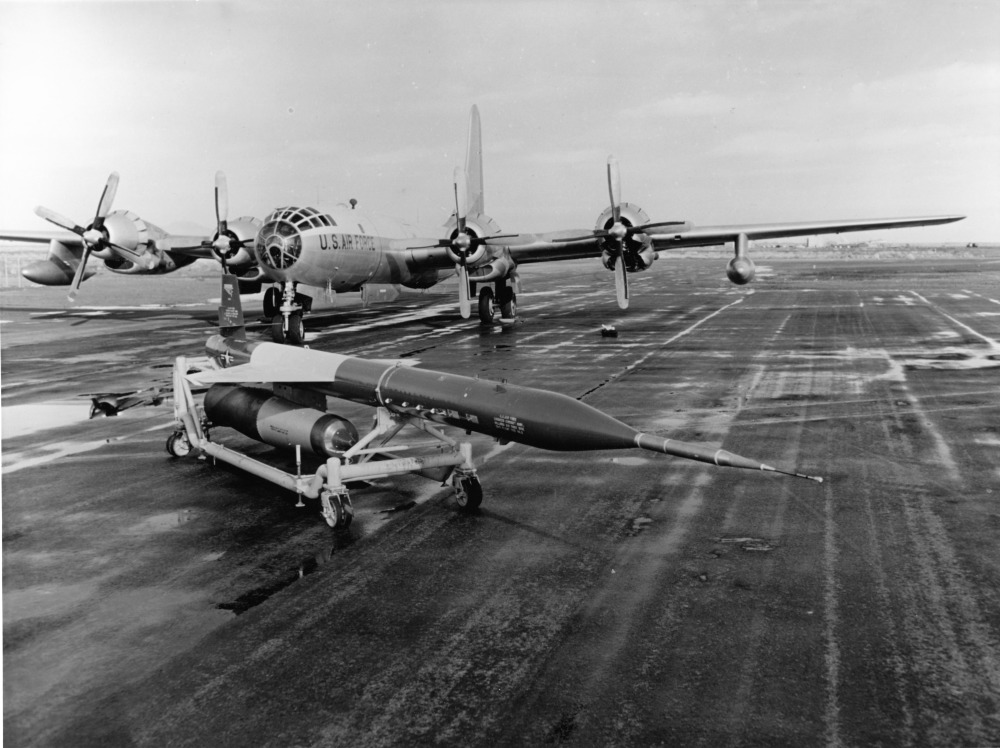
In 1954, Lockheed introduced the X-7A-3, a significantly refined version based on flight experience with the A-1. It featured improved aerodynamics, flight control systems, and instrumentation. The A-3 had rhombic wings (replacing the A-1’s tapered planform), twin underwing rocket boosters (instead of one tail-mounted unit), and was launched from a modified B-50 bomber. On one record-setting flight, an X-7A-3 powered by a larger Marquardt ramjet reached Mach 4.31, becoming the first aircraft to exceed Mach 4.
Variants and Legacy
The X-7A-3 formed the basis for several variants. The X-7B focused on high-speed guidance and control testing, although only a few were built. The Q-5 variant was developed as a high-speed target drone to test cutting-edge missile systems such as the Bomarc, Nike Hercules, and Navy Talos. Some Q-5s were ground-launched, though this limited performance. The Q-5’s fuselage was lengthened to house radar augmentation and telemetry systems for tracking and evaluation. Flown over White Sands Missile Range, the Q-5 was redesignated AQM-60 Kingfisher in 1963. The program ended in the mid-1960s—not due to any shortcomings—but because its extreme performance exceeded that of actual enemy threats.

Today, a few X-7 airframes are preserved in museums, though the aircraft remains one of the lesser-known members of the X-series. Ramjet technology saw limited operational use—on missiles like the Bomarc, Talos, and the canceled SM-64 Navaho cruise missile. The ambitious Republic XF-103 interceptor, which combined turbojet and ramjet propulsion, never reached production. Interestingly, the X-7’s development overlapped with Lockheed’s A-12 OXCART project, which evolved into the SR-71 Blackbird. Both aircraft came from Skunk Works, and although no direct influence is documented, the X-7 likely informed design and materials knowledge crucial for sustained Mach 3+ flight. The A-12’s Pratt & Whitney J58 engine functioned as a turbojet-ramjet hybrid at high speeds—a concept aligned with X-7 research.
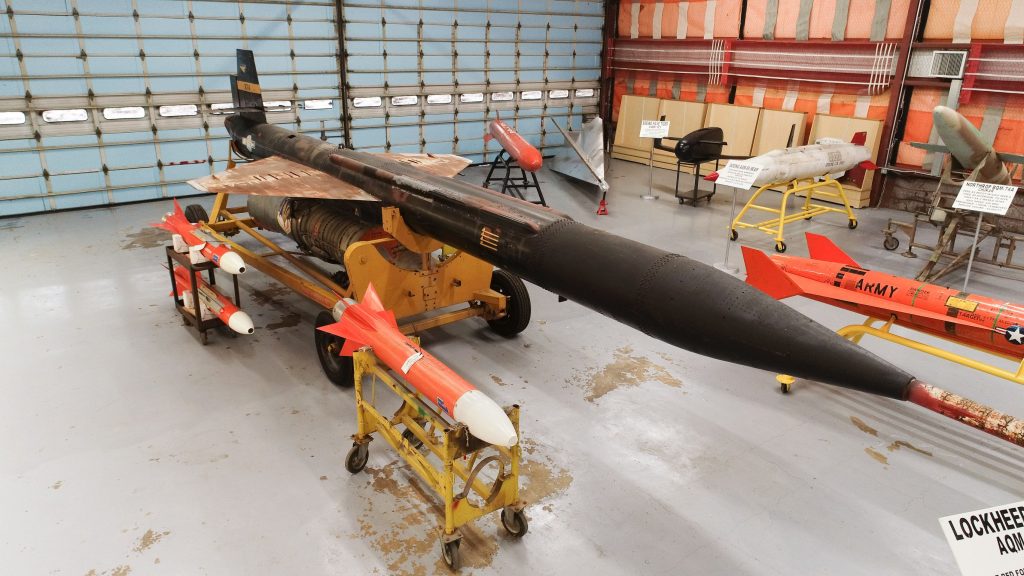
Design cues from the X-7A-1 also appeared in Lockheed’s F-104 Starfighter, whose slender fuselage and cruciform stabilizer layout evoke the earlier test vehicle, despite key differences. Finally, the Lockheed D-21 drone—another Mach 3+ unmanned vehicle powered by an RJ43 engine—appears to be a conceptual descendant of the X-7, though rarely acknowledged as such. The Lockheed X-7 represented a bold leap into the unknown during an era of rapid technological advancement. It pushed the limits of speed and propulsion and provided engineers with invaluable experience in high-speed aerodynamics, materials, and recovery systems. While never a household name, the X-7 laid the groundwork for later innovations in supersonic and hypersonic flight.
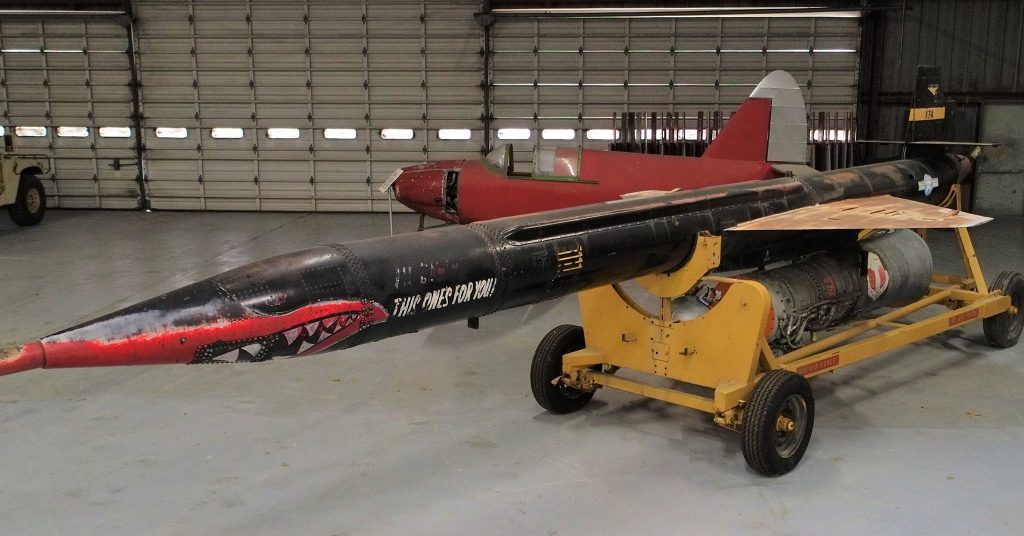
The author acknowledges with appreciation the assistance of Jenn Jett of the White Sands Missile Range Museum, who provided photographs from the museum archives.







